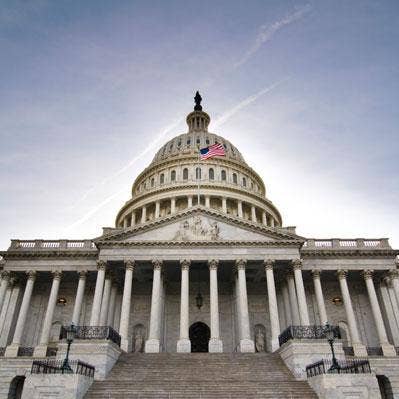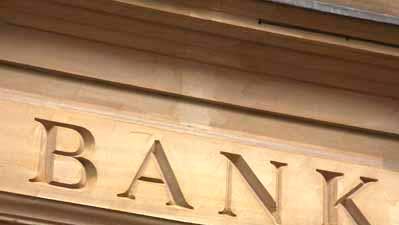Paycheck Protection Program: 5 Things You Need To Know
CRN spoke with solution providers regarding their experience with the Paycheck Protection Program. Here is what we found.

More Funding Coming For PPP
With Congress set to allocate an additional $310 billion into the small-business Paycheck Protection Program (PPP), solution providers are lining up to make sure they get access to the funds.
Solution providers said they are grateful that the federal government is once again coming to the aid of small businesses with the $310 billion. That comes on top of the initial $349 billion for the PPP, which ran out after just two weeks.
Bob Venero, CEO of Holbrook, N.Y.-based solution provider Future Tech Enterprise, No. 101 on the 2019 CRN Solution Provider 500, said he is glad to see Congress once again coming to the aid of small businesses and technology solution providers.
“You have to give tremendous credit to the federal government for stepping up and putting these programs together to help support the American small business, the American people and everyone that has been impacted by this pandemic,” said Venero.
The PPP, part of the federal government’s $2.3 trillion Coronavirus Aid, Relief, and Economic Security (CARES) Act, provides loans for up to two months of payroll costs plus an additional 25 percent for businesses of 500 or fewer employees with a cap of $10 million. Much of the 1 percent interest rate loans could be forgiven if businesses do not lay off workers and utilize the funds for payroll and other designated purposes
One channel executive, who did not want to be identified, said the funding is a smart investment given that it will prevent layoffs and save billions of dollars in unemployment funds. “Providing this lifeline keeps small businesses intact and their employees off the unemployment line,” he said.
Even with the $310 billion in additional funding, it is almost surely going to run out in just a few days, said solution provider executives who have battled for a share of the funds and have yet to receive approval. “There is already a backlog,” said one channel executive of the mad dash to obtain relief. “I would expect these new funds to also run out quickly.”
The Small Business Administration (SBA) has confirmed that it has approved 1.6 million PPP loans so far totaling $342.2 billion. “There are 30 million-plus small businesses in the U.S.,” said a channel executive. “Maybe 10 percent of the businesses that needed this got it in the first round.”
Solution provider executives contacted by CRN cautioned that those reaching out for funding need to put in place strict measures to ensure full compliance with the guidelines of the program. “As with any program of this size, there is always the potential for fraud so solution providers need to make sure that they adhere to all of the guidelines that come with the program specifically, the potential relief,” said one channel executive. “The government has the right to audit any of these loans and ensure that any amounts forgiven were used under the guidelines provided.”

Severely Underfunded
The biggest problem with the PPP is it is severely underfunded given the financial impact of the pandemic on the 30 million-plus small businesses in the U.S., said solution providers.
“If I provided a forecast like this, I would have been fired,” said one channel executive, who did not want to be identified. “They need at least three times the $349 billion initially approved. Whoever came up with that initial estimate for small businesses blew it.”
Some small-business advocates have estimated that $1 trillion in funding at minimum is needed to support small businesses hit hard by the pandemic.
Allen Falcon, founder and CEO of Cumulus Global, a 14-year-old Westborough, Mass.-based cloud solution provider that has been approved for PPP funding, said he has seen some estimates that if all businesses that qualify applied, it would require $2.7 trillion in funding.
Congress needs to understand that nothing less than survival is at stake for many small businesses that need the funding, said Falcon. “My CFO and I are running scenarios that say what happens if 30 percent of our customers don’t survive. That is not out of the realm of possibility.”
Falcon is urging his colleagues that have not yet obtained funding to call their congressmen and senators to push for more relief. “We urgently need expansion of these SBA programs. I’m surprised the $349 billion from the PPP lasted as long as it did,” he said.

A Small Business Administration Not Prepared For Onslaught
The SBA lacks the infrastructure and scale to support the tens of millions of small businesses in the U.S. looking for relief from the Paycheck Protection Program.
“The whole problem is the government is using an SBA loan infrastructure that was not designed for this kind of crisis,” said a channel executive who did not want to be identified. “Banks just can’t write the volume of SBA loans that are required here in such a compressed time frame.”
The SBA loan program is designed largely to support smaller community and regional banks—which are used to providing SBA loans. In this case, banks across the country—including the megabanks—made a mad dash to grab a share of the PPP funds. “Those big banks are being bombarded with applications they can’t fulfill because they don’t have the infrastructure in place,” said a channel executive who went through the process. “I think the SBA and government was trying to do the right thing here, but the banks were not prepared for this. The banks should have been provided some assistance to get the loans approved and processed for small businesses.”
Barry Shevlin, CEO of Vology, No. 173 on the 2019 CRN Solution Provider 500 with 200 employees, said Vology received approval and funds for the PPP loan by working closely with Skyway Capital Markets—a midmarket Tampa, Fla., investment firm that is working with solution providers to obtain the coronavirus relief.
“Skyway has close ties with community banks,” he said. “They have a lot of small-bank experience and are finding success. The big banks can’t get out of their own way. Skyway is helping small businesses get to the front of the line at banks that have the back-end processes to process these loans. They have been very successful. The key is stay away from the bigger banks and find the smaller banks that have the capacity to process these loans.”
Shevlin said it is the smaller banks that have deep knowledge and understanding of the SBA, and SBA loans are better positioned to help solution providers. “Those are the banks that are being successful,” he said. “These small banks have the infrastructure in place to handle these loans.”

Qualification Guidelines Were Initially Vague
Although the PPP was designed to provide relief for businesses with 500 or fewer employees, some bigger businesses were also eligible.
That’s because the “interpretation of what businesses qualify” for the loans was initially very vague, said a channel executive who did not want to be identified. “Ultimately, they used the SBA’s definition of a “small-business concern,” which largely mirrors Standard Industrial Classification (SIC) codes that factor in employee count, revenue caps and business industry types to determine qualification. “This guidance was initially unclear,” said a channel executive. “Ultimately, we needed our attorneys to help determine if we qualified and initially, their opinion was different than the bank. It was very confusing.”
In the case of the hospitality industry, all restaurants, regardless of the number of employees, were eligible. That meant Shake Shack, a publicly held restaurant chain that had 8,000 employees, was eligible for the small-business program.
Shake Shack announced Sunday that it is returning the $10 million it received from the Paycheck Protection Program.
“Shake Shack was fortunate last Friday to be able to access the additional capital we needed to ensure our long-term stability through an equity transaction in the public markets,” said Shake Shack founder and Union Square Hospitality Group CEO Danny Meyer in a LinkedIn post. “We’re thankful for that and we’ve decided to immediately return the entire $10 million PPP loan we received last week to the SBA so that those restaurants who need it most can get it now.”
Future Tech Enterprise’s Venero said Shake Shack should never have been allowed to receive the small-business funds.
“That’s a hole or a gap in the program,” he said. “That should be fixed in the new round of funding. Shake Shack should not have been able to apply for these funds based on the size of the business.”

Ownership Structure Prevents Some Private-Equity-Backed MSPs Access To Funds
The legislation included an “affiliation rule” in the Paycheck Protection Program that disqualifies some MSPs that are private-equity- or venture-capital-owned to participate in the program.
“The affiliation rule says you must add up all of the employees that a private equity or venture company has a majority share of ownership in to determine the employee count,” said a channel executive. “In many cases this leaves small businesses out in the cold if they are held by an investor with more than 500 employees under their full portfolio. The legislation was written to prevent private-equity- and venture-capital-backed companies to get funding for individual businesses as they are thought to have alternative means of financing.”
Given the influx of private equity capital into the channel in the last decade, there is going to be a large number of MSPs who simply do not qualify based on the affiliation rule based upon their ownership structure, said a channel executive. “Not every private equity company—especially smaller PE firms-—have the mechanisms in place to fund their MSPs that are struggling right now,” said the executive.

Make Sure You Have At Least Two Banking Relationships
Key to success in a post-coronavirus world is having at least two strong banking relationships— one of which should be a community bank, said industry executives.
“Bigger is not always better,” said a channel executive. “While the larger banks do a lot of things well, it is often the smaller ones that are more nimble and can cut through some of the red tape surrounding any government program.”
Indeed, a strong relationship with a community bank is one of the keys to getting access to the PPP funds. Vology CEO Shevlin said it is absolutely critical that partners establish those relationships now.
Shevlin said the community banks have been the most successful processing the loans—not big banks. “We got our loan from a regional bank,” he said. “No big banks are looking for new customers from this, but that is how the smaller banks are looking at this. How much time is a big bank going to spend doing a loan with an MSP with 10 employees? How is that going to become a priority at a big bank?”
Shevlin credited a personal banking relationship he had as being key to getting PPP funding. “Relationships are key to success in our industry,” he said. “If you have a personal relationship with a smaller bank, that is the first place you should go. Barring that, you need to find someone else that does have a relationship with a smaller regional or community bank.”